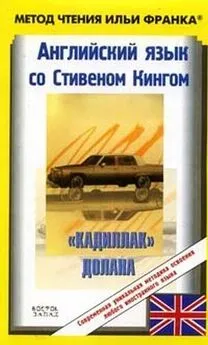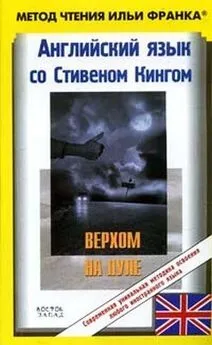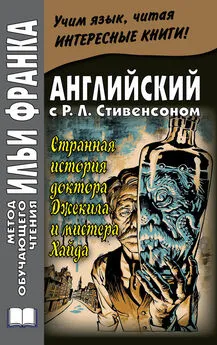Steven Dubner - Freakonomics
- Название:Freakonomics
- Автор:
- Жанр:
- Издательство:неизвестно
- Год:неизвестен
- ISBN:нет данных
- Рейтинг:
- Избранное:Добавить в избранное
-
Отзывы:
-
Ваша оценка:
Steven Dubner - Freakonomics краткое содержание
Freakonomics - читать онлайн бесплатно полную версию (весь текст целиком)
Интервал:
Закладка:
So why did he start the war? As a matter of fact, he didn’t. It was his foot soldiers who started it. It turns out that a crack boss didn’t have as much control over his subordinates as he would have liked. That’s because they had different incentives.
For J. T., violence was a distraction from the business at hand; he would have preferred that his members never fired a single gunshot. For a foot soldier, however, violence served a purpose. One of the few ways that a foot soldier could distinguish himself—and advance in the tournament—was by proving his mettle for violence. A killer was respected, feared, talked about. A foot soldier’s incentive was to make a name for himself; J. T.’s incentive was, in effect, to keep the foot soldiers from doing so. “We try to tell these shorties that they belong to a serious organization,” he once told Venkatesh. “It ain’t all about killing. They see these movies and shit, they think it’s all about running around tearing shit up.
But it’s not. You’ve got to learn to be part of an organization; you can’t be fighting all the time. It’s bad for business.”
In the end, J. T. prevailed. He oversaw the gang’s expansion and ushered in a new era of prosperity and relative peace. J. T. was a winner. He was paid well because so few people could do what he did. He was a tall, good-looking, smart, tough man who knew how to motivate people. He was shrewd too, never tempting arrest by carrying guns or cash. While the rest of his gang lived in poverty with their mothers, J. T. had several homes, several women, several cars.
He also had his business education, of course. He constantly worked to extend this advantage. That was why he ordered the corporate-style bookkeeping that eventually found its way into Sudhir Venkatesh’s hands. No other franchise leader had ever done such a thing. J. T. once showed his ledgers to the board of directors to prove, as if proof were needed, the extent of his business acumen.
And it worked. After six years running his local gang, J. T. was promoted to the board of directors. He was now thirty-four years old. He had won the tournament. But this tournament had a catch that publishing and pro sports and even Hollywood don’t have. Selling drugs, after all, is illegal. Not long after he made the board of directors, the Black Disciples were essentially shut down by a federal indictment—the same indictment that led the gangster named Booty to turn over his notebooks to Venkatesh—and J. T. was sent to prison.
Now for another unlikely question: what did crack cocaine have in common with nylon stockings?
In 1939, when DuPont introduced nylons, countless American women felt as if a miracle had been performed in their honor. Until then, stockings were made of silk, and silk was delicate, expensive, and in ever shorter supply. By 1941, some sixty-four million pairs of nylon stockings had been sold—more stockings than there were adult women in the United States. They were easily affordable, immensely appealing, practically addictive.
DuPont had pulled off the feat that every marketer dreams of: it brought class to the masses. In this regard, the invention of nylon stockings was markedly similar to the invention of crack cocaine.
In the 1970s, if you were the sort of person who did drugs, there was no classier drug than cocaine. Beloved by rock stars and movie stars, ballplayers and even the occasional politician, cocaine was a drug of power and panache. It was clean, it was white, it was pretty. Heroin was droopy and pot was foggy but cocaine provided a beautiful high.
Alas, it was also very expensive. Nor did the high last long. This led cocaine users to try jacking up the drug’s potency. They did this primarily by freebasing—adding ammonia and ethyl ether to cocaine hydrochloride, or powdered cocaine, and burning it to free up the “base” cocaine. But this could be dangerous. As Richard Pryor famously proved—he nearly killed himself while freebasing—chemistry is best left to chemists.
Meanwhile, cocaine dealers and aficionados across the country, and perhaps also in the Caribbean and South America, were working on a safer version of distilled cocaine. They found that mixing powdered cocaine in a saucepan with baking soda and water, and then cooking off the liquid, produced tiny rocks of smokeable cocaine. It came to be called crack for the crackling sound the baking soda made when it was burned. More affectionate nicknames would soon follow: Rock, Kryptonite, Kibbles ’n Bits, Scrabble, and Love. By the early 1980s, the class drug was ready for the masses. Now only two things were needed to turn crack into a phenomenon: an abundant supply of raw cocaine and a way to get the new product to a mass market.
The cocaine was easy to come by, for the invention of crack coincided with a Colombian cocaine glut. During the late 1970s, the wholesale price of cocaine in the United States fell dramatically, even as its purity was rising. One man, a Nicaraguan émigré named Oscar Danilo Blandon, was suspected of importing far more Colombian cocaine than anyone else. Blandon did so much business with the budding crack dealers of South Central Los Angeles that he came to be known as the Johnny Appleseed of Crack. Blandon would later claim that he was selling the cocaine to raise money for the CIA-sponsored Contras back home in Nicaragua. He liked to say that the CIA was in turn watching his back in the United States, allowing him to sell cocaine with impunity. This claim would spark a belief that still seethes to this day, especially among urban blacks, that the CIA itself was the chief sponsor of the American crack trade.
Verifying that claim is beyond the purview of this book. What is demonstrably true is that Oscar Danilo Blandon helped establish a link—between Colombian cocaine cartels and inner-city crack merchants—that would alter American history. By putting massive amounts of cocaine into the hands of street gangs, Blandon and others like him gave rise to a devastating crack boom. And gangs like the Black Gangster Disciple Nation were given new reason to exist.
As long as there have been cities, there have been gangs of one sort or another. In the United States, gangs have traditionally been a sort of halfway house for recent immigrants. In the 1920s, Chicago alone had more than 1,300 street gangs, catering to every ethnic, political, and criminal leaning imaginable. As a rule, gangs would prove much better at making mayhem than money. Some fancied themselves commercial enterprises, and a few—the Mafia, most notably—
actually did make money (at least for the higher-ups). But most gangsters were, as the cliché assures us, two-bit gangsters.
Black street gangs in particular flourished in Chicago, with membership in the tens of thousands by the 1970s. They constituted the sort of criminals, petty and otherwise, who sucked the life out of urban areas. Part of the problem was that these criminals never seemed to get locked up. The 1960s and 1970s were, in retrospect, a great time to be a street criminal in most American cities. The likelihood of punishment was so low—this was the heyday of a liberal justice system and the criminals’ rights movement—that it simply didn’t cost very much to commit a crime.
By the 1980s, however, the courts had begun to radically reverse that trend.
Criminals’ rights were curtailed and stricter sentencing guidelines put in place.
More and more of Chicago’s black gangsters were getting sent to federal prisons.
By happy coincidence, some of their fellow inmates were Mexican gang members with close ties to Colombian drug dealers. In the past, the black gangsters had bought their drugs from a middleman, the Mafia—which, as it happened, was then being pummeled by the federal government’s new anti-racketeering laws.
But by the time crack came to Chicago, the black gangsters had made the connections to buy their cocaine directly from Colombian dealers.
Cocaine had never been a big seller in the ghetto: it was too expensive. But that was before the invention of crack. This new product was ideal for a low-income, street-level customer. Because it required such a tiny amount of pure cocaine, one hit of crack cost only a few dollars. Its powerful high reached the brain in just a few seconds—and then faded fast, sending the user back for more. From the outset, crack was bound to be a huge success.
And who better to sell it than the thousands of junior members of all those street gangs like the Black Gangster Disciple Nation? The gangs already owned the territory—real estate was, in essence, their core business—and they were suitably menacing to keep customers from even thinking about ripping them off.
Suddenly the urban street gang evolved from a club for wayward teenagers into a true commercial enterprise.
The gang also presented an opportunity for longtime employment. Before crack, it was just about impossible to earn a living in a street gang. When it was time for a gangster to start supporting a family, he would have to quit. There was no such thing as a thirty-year-old gangster: he was either working a legitimate job, dead, or in prison. But with crack, there was real money to be made. Instead of moving on and making way for the younger gangsters to ascend, the veterans stayed put.
This was happening just as the old-fashioned sort of lifetime jobs—factory jobs especially—were disappearing. In the past, a semi-skilled black man in Chicago could earn a decent wage working in a factory. With that option narrowing, crack dealing looked even better. How hard could it be? The stuff was so addictive that a fool could sell it.
Who cared if the crack game was a tournament that only a few of them could possibly win? Who cared if it was so dangerous—standing out there on a corner, selling it as fast and anonymously as McDonald’s sells hamburgers, not knowing any of your customers, wondering who might be coming to arrest or rob or kill you? Who cared if your product got twelve-year-olds and grandmothers and preachers so addicted that they stopped thinking about anything except their next hit? Who cared if crack killed the neighborhood?
For black Americans, the four decades between World War II and the crack boom had been marked by steady and often dramatic improvement. Particularly since the civil rights legislation of the mid-1960s, the telltale signs of societal progress had finally taken root among black Americans. The black-white income gap was shrinking. So was the gap between black children’s test scores and those of white children. Perhaps the most heartening gain had been in infant mortality.
As late as 1964, a black infant was twice as likely to die as a white infant, often of a cause as basic as diarrhea or pneumonia. With segregated hospitals, many black patients received what amounted to Third World care. But that changed when the federal government ordered the hospitals to be desegregated: within just seven years, the black infant mortality rate had been cut in half. By the 1980s, virtually every facet of life was improving for black Americans, and the progress showed no sign of stopping.
Then came crack.
While crack use was hardly a black-only phenomenon, it hit black neighborhoods much harder than most. The evidence can be seen by measuring the same indicators of societal progress cited above. After decades of decline, black infant mortality began to soar in the 1980s, as did the rate of low-birthweight babies and parent abandonment. The gap between black and white schoolchildren widened. The number of blacks sent to prison tripled. Crack was so dramatically destructive that if its effect is averaged for all black Americans, not just crack users and their families, you will see that the group’s postwar progress was not only stopped cold but was often knocked as much as ten years backward. Black Americans were hurt more by crack cocaine than by any other single cause since Jim Crow.
Читать дальшеИнтервал:
Закладка:






![Юрий Литвин - Stiffen corpses: Жизнь и работа коченеющих трупов [СИ]](/books/1078912/yurij-litvin-stiffen-corpses-zhizn-i-rabota-kochene.webp)


